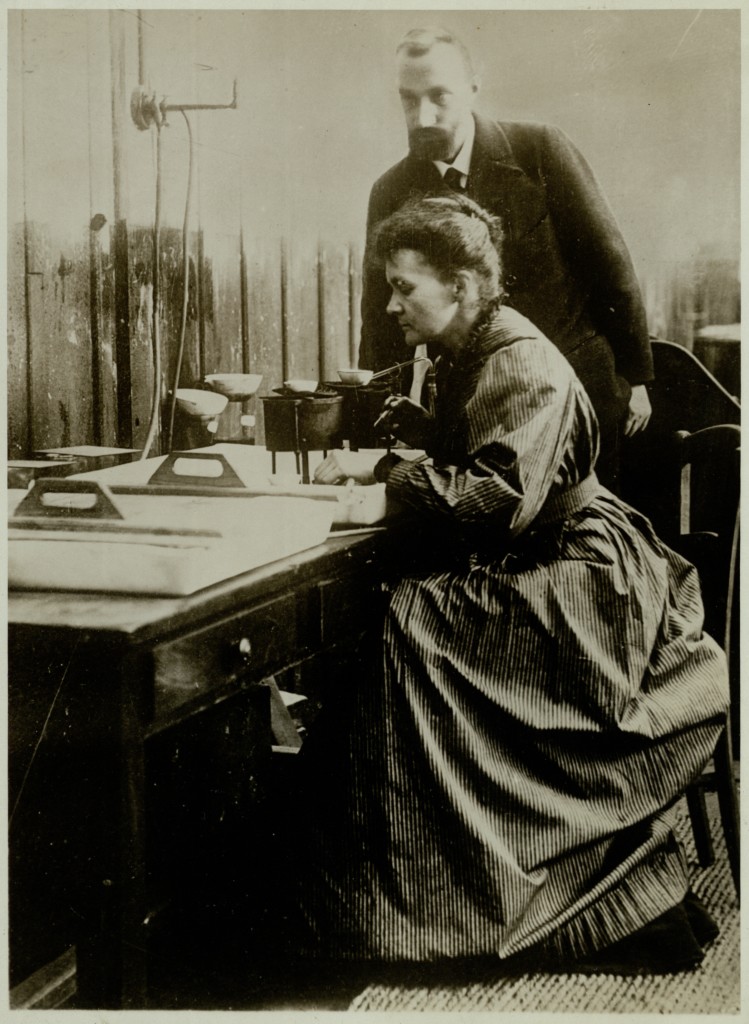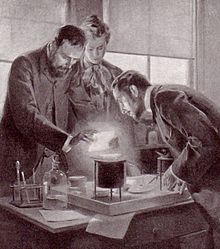

Her financial situation was much eased by her appointment as Professor to succeed her husband. It was a devastating loss to Marie, but after a few weeks, and with the help of her sister Bronja, she was back at her work, even more committed to it. Almost certainly, Pierre’s poor health contributed indirectly to his accidental death under the wheels of a horse-drawn cart in 1906. Even if it had been, they would probably have been unwilling to restrict their work. We know now that they must have been suffering from radiation sickness, but at that time such a danger was not recognised. In her biography of Pierre, Marie wrote: “All my life through, the new sights of Nature made me rejoice like a child.” They had two daughters, Irene born in 1897, who herself became a Nobel prizewinner in 1935, and Eve, born in 1905, who became a writer and music critic.īefore the end of the century, both Pierre and Marie were suffering from occasional ill-health – aching joints, tiredness and anaemia.


Marie asked for a practical dress for her wedding, one that she could wear afterwards for work in the lab! For many years the Curies were poor, suffering great adversity and hardship, but they took great pleasure in life not only from their pursuit of scientific understanding but also from the enjoyment of simple pleasures such as cycling in the French countryside. They were married in 1895 in a simple civil ceremony, not a church one, because of their non-religious outlook. Their work on radioactivity was a response to the great puzzlement existing at that time about the structure of atoms. He was already an established physicist with a particular love of symmetry in natural things – spiders’ webs, the human hands, crystals. Before long she had met and started to work with Pierre Curie. Studying chemistry, physics and mathematics, she realised that she wanted to spend her life in research. Eventually she was able to join her sister Bronja, who had gone to France to study medicine, and in Paris in 1891 her scientific career began. Marie’s father, however, had a strong streak of rationalism in him and this, combined with the death of her mother and one of her sisters from tuberculosis when Marie was only eleven, turned her into an agnostic by the time she was fifteen.įrom her early days, Marie, born Marie Slodowska in 1867, had an unusually enquiring mind – but in Poland, at that time part of the Russian Empire, it was impossible for a girl to acquire a scientific education. Pierre and Marie came from apparently very different backgrounds, she being Polish by birth and brought up in the Catholic faith, while he was French and from an anti-clerical and freethinking family. This time it was for Chemistry, and acknowledged her discovery of new elements such as polonium and radium, later to be used widely in medicine in the treatment of diseases. In 1903 Pierre and Marie Curie (jointly with another Frenchman, Henri Becquerel) were awarded the Nobel Prize for Physics, and eight years later Marie Curie became the first person to have the distinction of gaining two Nobel Prizes. Its use was pioneered by two remarkable, and courageous, people, Marie and Pierre Curie. However, the concept of using radio-active materials to help humanity has been known for only a hundred years. Today we take radio-therapy for granted in helping to detect and cure illnesses. It is only to be understood.” Neither of the Curies was a religious believer and their wedding was a secular one. She once said, “Nothing in life is to be feared. Marie was the first woman scientist of international distinction. Eminent physicists, working in France, the Curies discovered radium and were awarded Nobel prizes, though they both turned down the offer of a Legion d’Honneur.


 0 kommentar(er)
0 kommentar(er)
